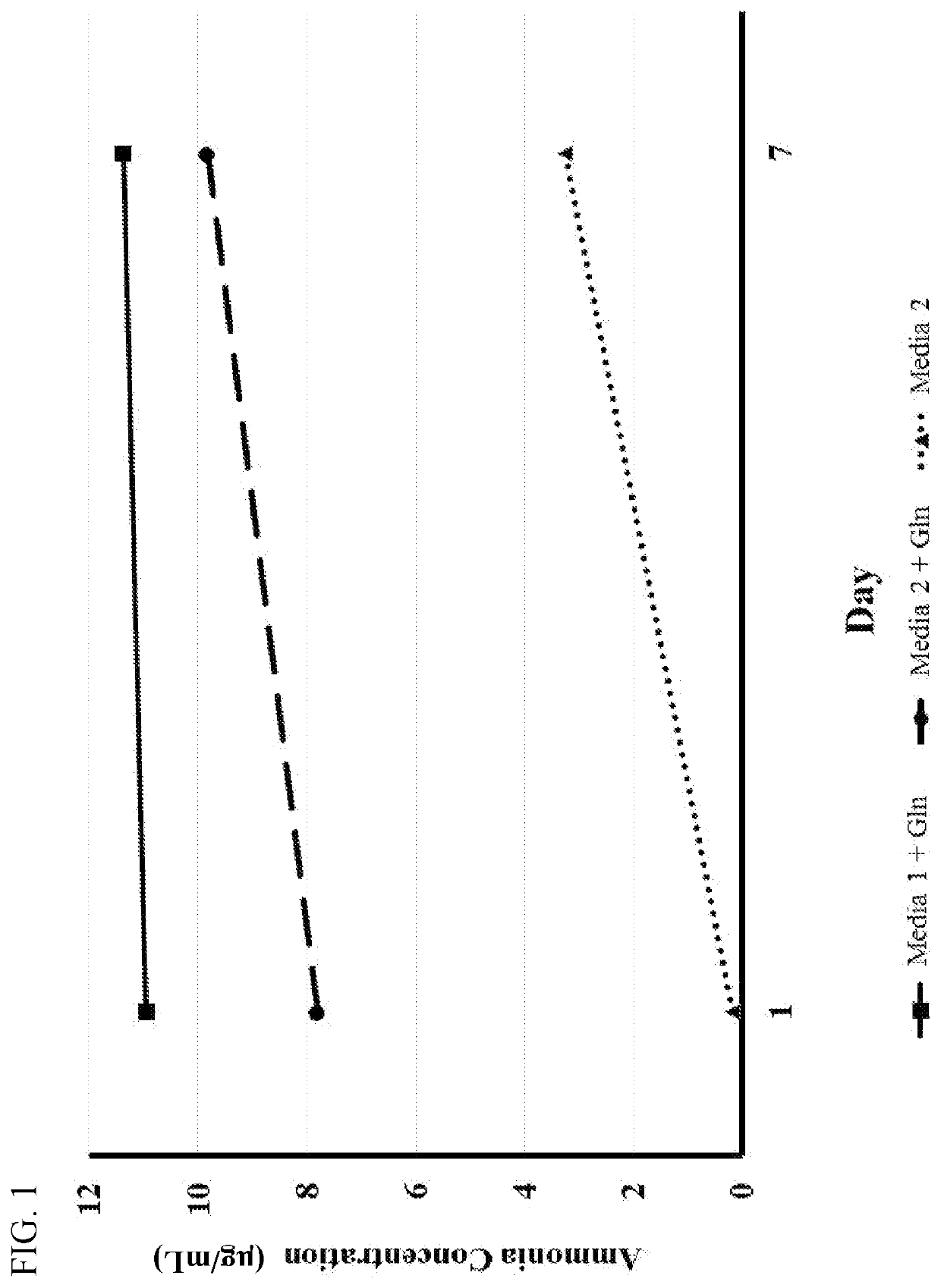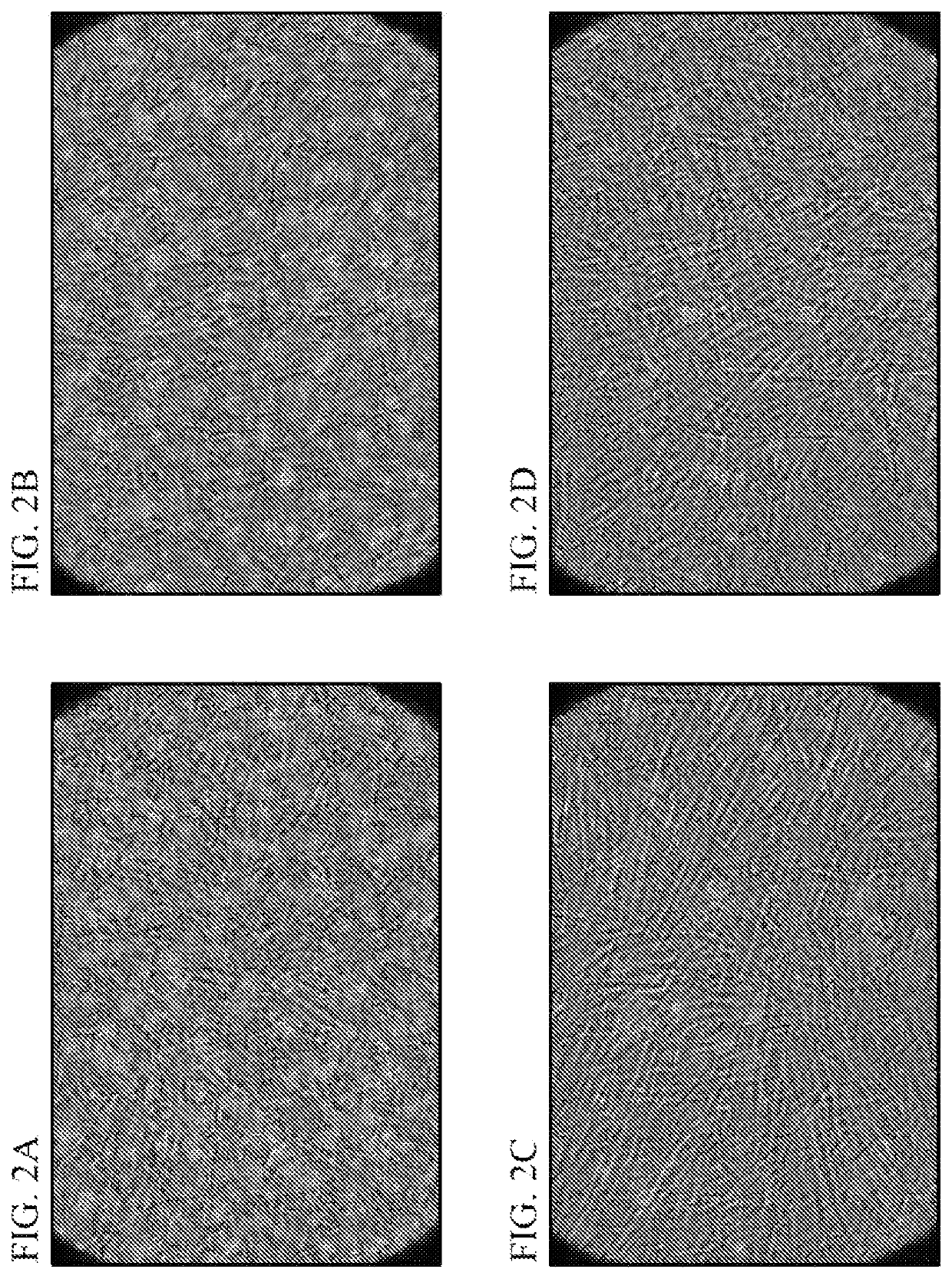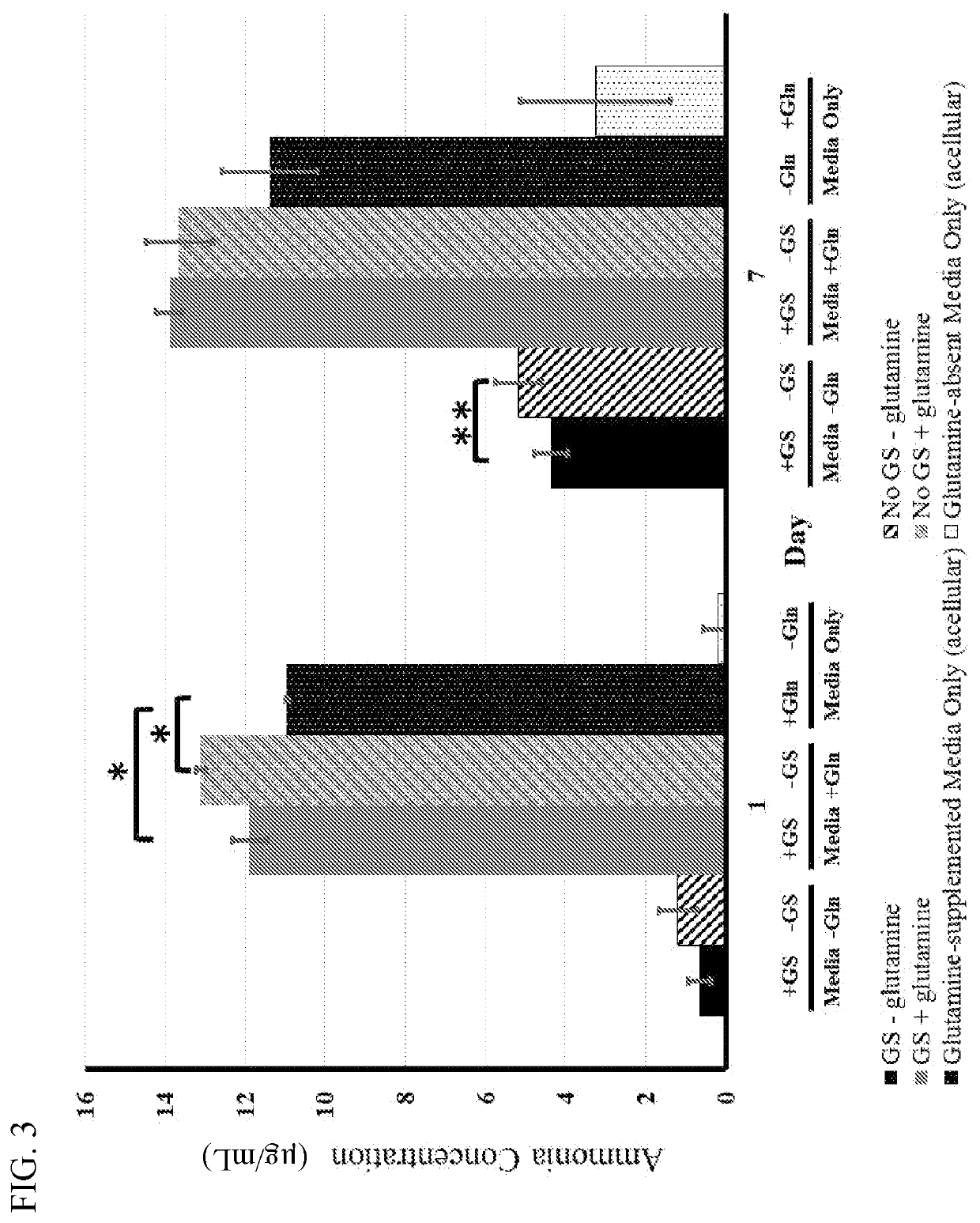Compositions and methods for increasing the efficiency of cell cultures used for food production
a cell culture and cell culture technology, applied in the direction of peptides, hormone peptides, transferases, etc., can solve the problems of limiting final yield and limited production of cells for biomass production
- Summary
- Abstract
- Description
- Claims
- Application Information
AI Technical Summary
Benefits of technology
Problems solved by technology
Method used
Image
Examples
example 1
The Effects of Ectopic Expression of Glutamine Synthetase (GS) in Primary Duck Fibroblasts and Myoblasts
[0169]This example describes the effects of ectopic expression of GS on ammonia concentration in ambient media from primary duck fibroblast and myoblast cultures.
Methods
Measurement of Ammonia Concentration
[0170]Following the manufacturer's instructions (Sigma-Aldrich #AA0100), the absolute ammonia concentration (in μg / mL) was determined for each time point and treatment group (in biological triplicate). Results were reported as the mean of the treatment group bounded by the 95% confidence interval. Measurements of the ammonia detection assay were performed on a spectrophotometer (Spectramax 250). All statistical analyses and visualizations were performed in Microsoft Excel 2010.
Primary Duck Fibroblast and Myoblast Cultures
[0171]A peptide-coated (peptides mimicking extracellular matrix) T-150 flask was prepared for cell seeding by adding 10 mL of an aqueous peptide solution to the ...
example 2
The Effects of Ectopic Expression of IGF-1 and Albumin Expression in Primary Duck Fibroblasts and Myoblasts
[0190]This example describes the effects of ectopic expression of IGF-1 and albumin expression on the concentration of IGF-1 and albumin in media in primary duck fibroblasts and myoblasts.
[0191]Primary duck myoblast and fibroblast cells were isolated and cultured as described in Example 1. Cells were washed with PBS and transfection medium was added. 1 μg of plasmid DNA comprising a human serum albumin gene (Genscript OHu18744, Table 1A), a murine serum albumin gene (Genscript OMu21640, Table 1A) or human insulin-like growth factor 1 (IGF-1) (Origene RG212527, Table 1A) gene coding sequence fused to a nucleotide coding sequence encoding a FLAG-tag peptide (DYKDDDDK (SEQ ID NO: 57)) driven by a CMV promoter was complexed using the Lipofectamine 3000 system as a transfection vehicle (Thermo Fisher Scientific #L3000001). For transfection, the complexed DNA was added dropwise to ea...
example 3
Edible Metazoan Biomass Manufacturing Methods
[0195]The manufacturing of an edible metazoan biomass, in one exemplary protocol, can comprise three steps:
[0196]Step 1 is expanding cell populations overexpressing containing a GS gene, an IGF gene, an albumin gene, or a combination thereof in a cell line capable of self-renewal, wherein the cell line is a myogenic transcription factor-modified cell line, and wherein the cell line is of from a livestock, poultry, game or an aquatic animal species. Selected cell populations overexpressing targeted genes are seeded onto a substrate consisting of peptide-coated tissue-culture treated plastic, in a standard growth medium at a density of 7.5×103 cells / cm2 and cultured at 37° C. under 5% CO2 atmospheric conditions. As cultures approach 80% confluence, cells are enzymatically dissociated and the expanded quantity of cells are seeded at 7.5×103 cells / cm2. This process is repeated until the total number of cells harvested following dissociation e...
PUM
 Login to View More
Login to View More Abstract
Description
Claims
Application Information
 Login to View More
Login to View More - R&D
- Intellectual Property
- Life Sciences
- Materials
- Tech Scout
- Unparalleled Data Quality
- Higher Quality Content
- 60% Fewer Hallucinations
Browse by: Latest US Patents, China's latest patents, Technical Efficacy Thesaurus, Application Domain, Technology Topic, Popular Technical Reports.
© 2025 PatSnap. All rights reserved.Legal|Privacy policy|Modern Slavery Act Transparency Statement|Sitemap|About US| Contact US: help@patsnap.com



